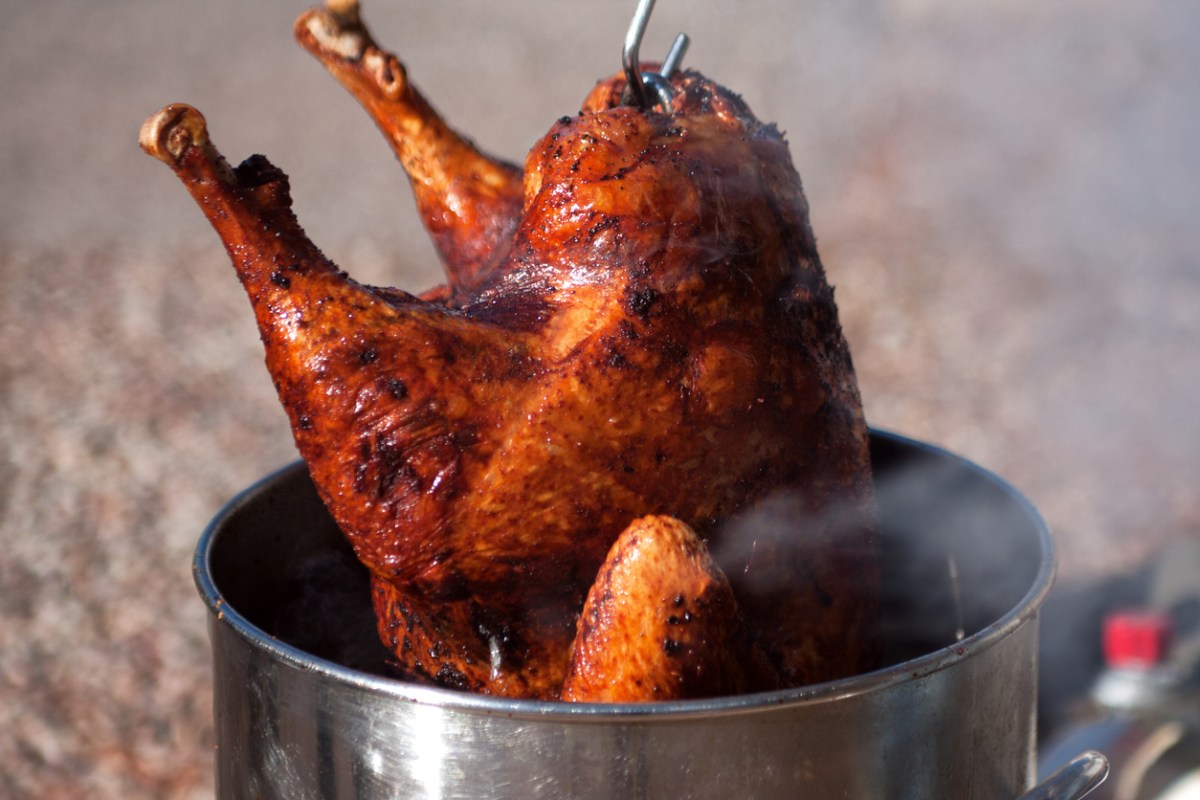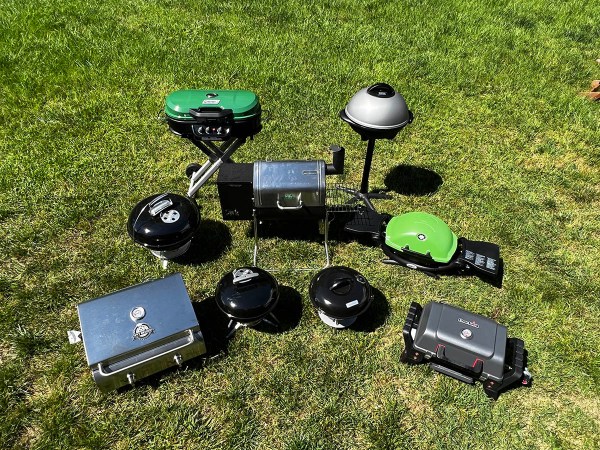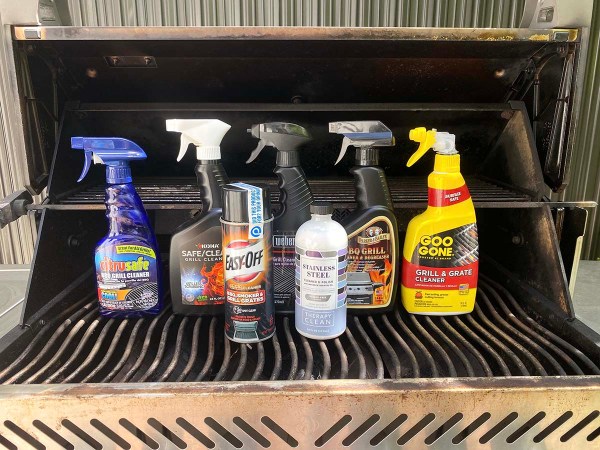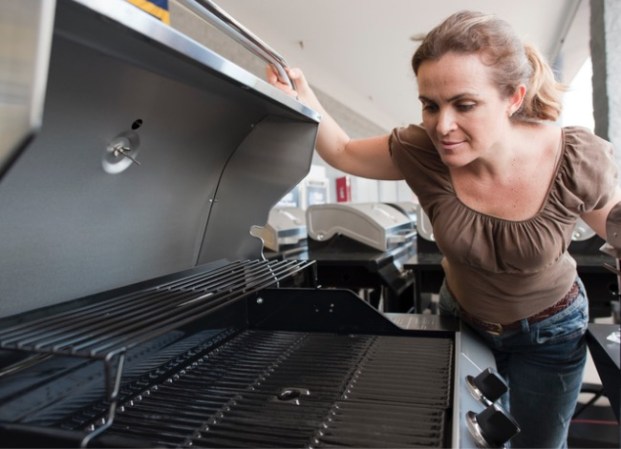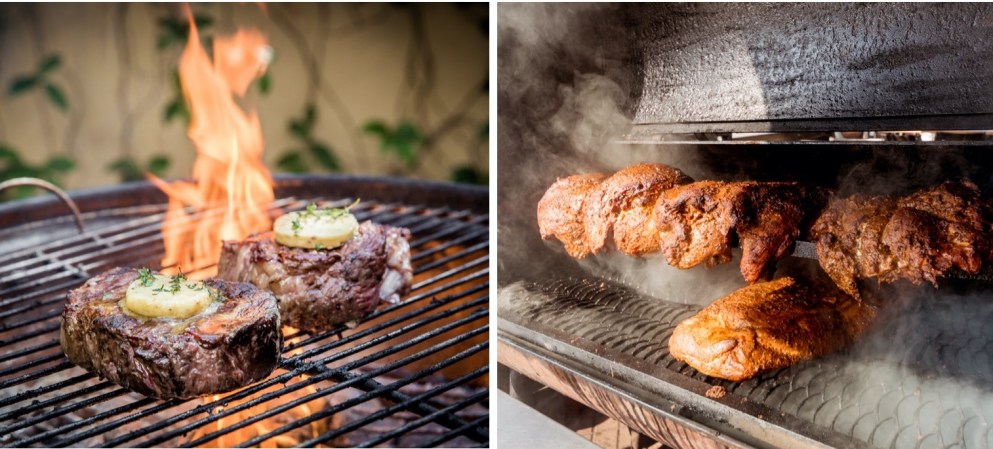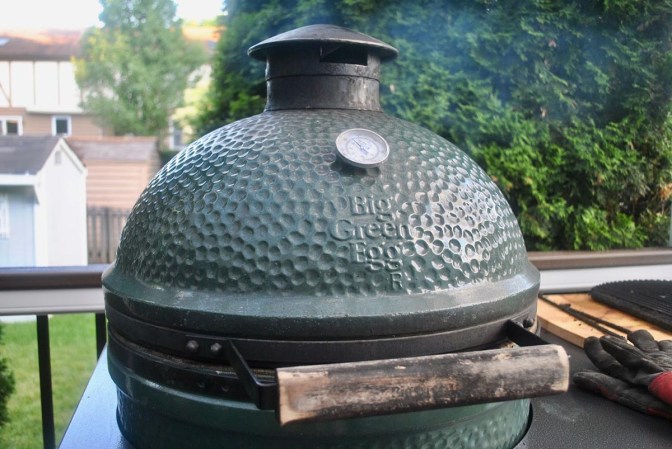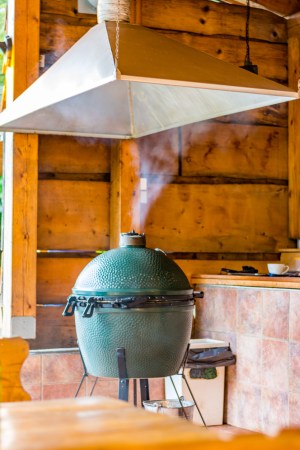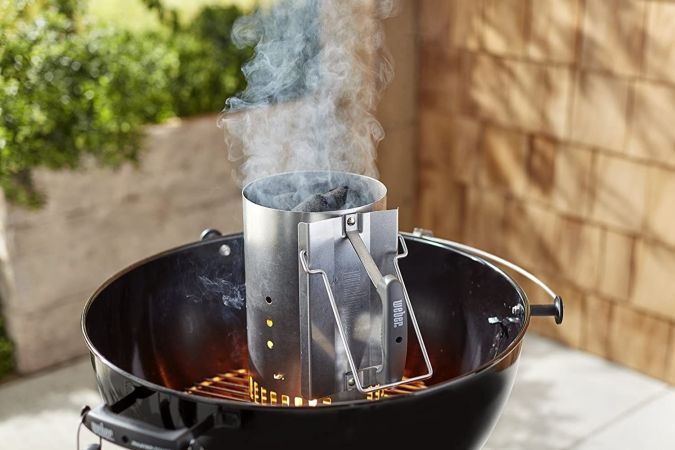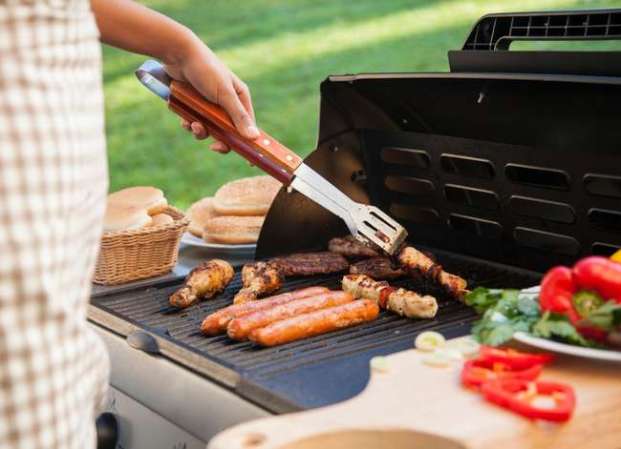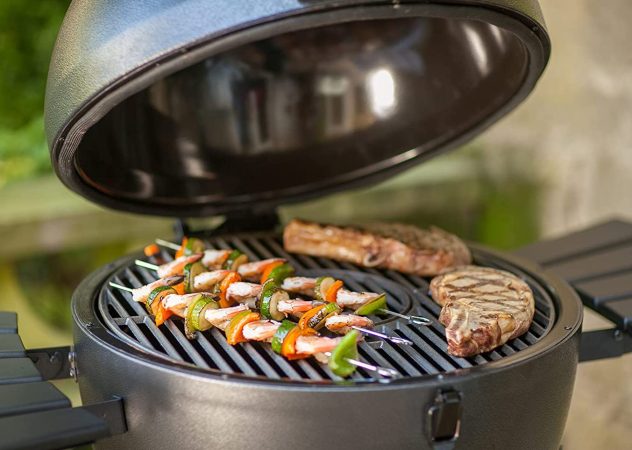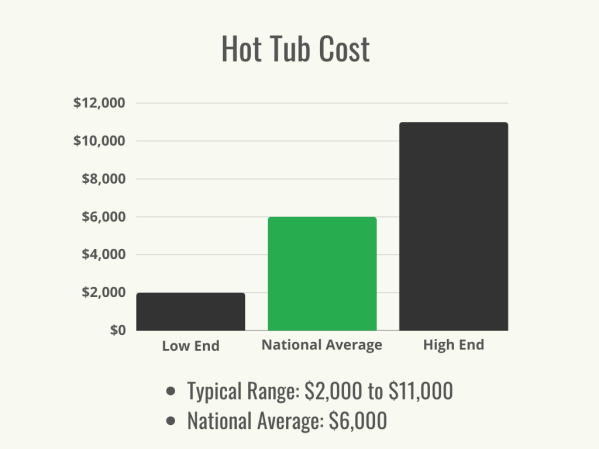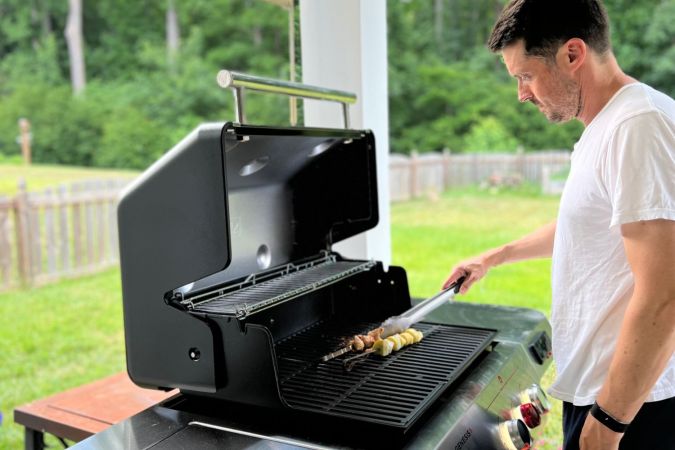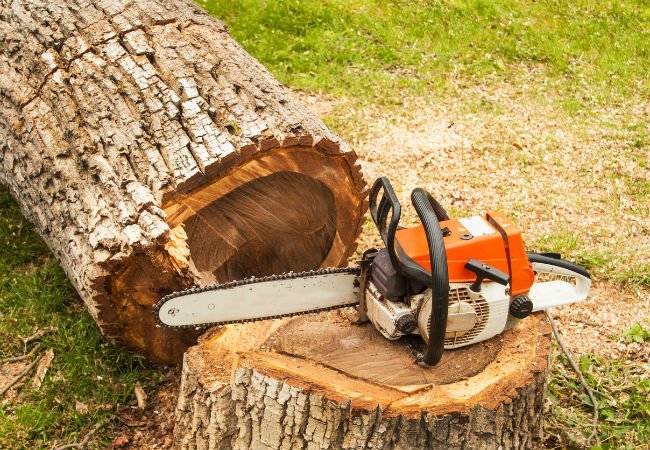We may earn revenue from the products available on this page and participate in affiliate programs. Learn More ›
I’ve wasted a lot of time roasting turkeys. The turkeys weren’t delicious; I flavored them inside and out to ensure moist, tender, and flavorful birds. But I could have done just a fraction of prep and spent one-quarter of the time deep frying those turkeys instead. Consider the time differences: It takes 20 minutes per pound to roast a turkey, and only 3 to 4 minutes per pound to deep fry a turkey.
Of course, there are legitimate safety concerns when deep frying turkeys in bubbling peanut oil over outdoor propane flames (or in electric indoor fryers). Most accidents are caused by user error. Over the course of a month, I conducted Bob Vila’s hands-on testing of the best turkey fryers. After successfully dunking 46 pounds of poultry into 18 gallons of hot oil, these are my key turkey-frying takeaways.
DON’T get started without a basic understanding of how to deep fry a turkey.
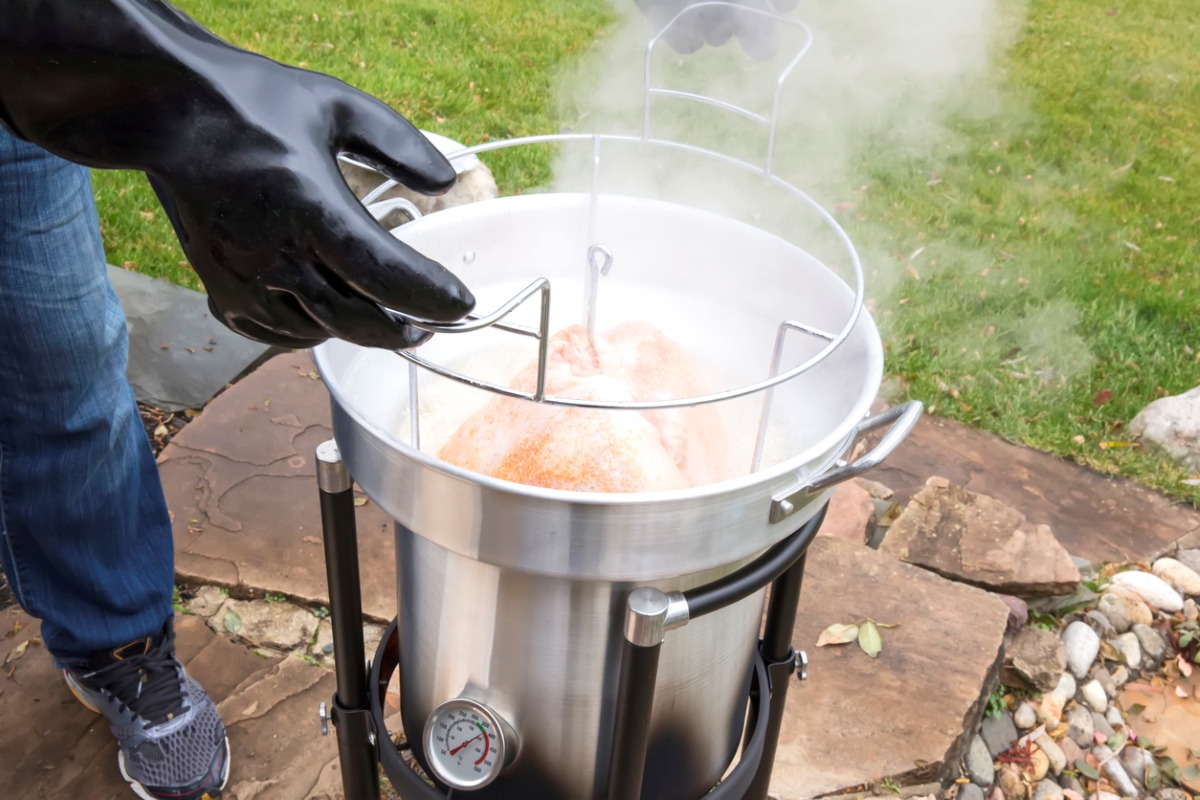
Don’t take for granted the potential for accidents, as well as accidental overcooking, when frying a bird this size. Take your time, prepare carefully, and follow these basic steps. Be sure to check your turkey fryer’s instruction manual for specific setup and other steps or precautions:
- Choose a fryer designed specifically for frying turkeys outside (or inside).
- Thaw the turkey completely, remove giblets, separate the legs, and pat the turkey dry before placing in oil.
- Don safety gear such as long, heavy-duty oven mitts and a lead apron, and have thermometers, a fire extinguisher, and other tools close at hand.
- Choose a high-heat oil and fill the fryer to its maximum line (alternately, calculate the amount needed by using the water-test method mentioned below).
- Keep the flame low until the oil goes on the burner, then heat the oil to 350 degrees, using a frying thermometer to measure.
- Place the turkey on the fryer’s lifter, hook, or basket. Turn off the flame and remove the oil thermometer before gently lowering the turkey into the pot. Restart the flame and replace the thermometer after the turkey is submerged.
- Set a timer per appliance instructions (typically 3 to 4 minutes per pound to deep fry a turkey outdoors in oil). Keep an eye on the fryer throughout heating and cooking.
- At the estimated time, gently raise the turkey to let oil run off. Check the temperature with a meat probe thermometer.
- Let the cooked turkey rest about 20 minutes on paper towels before slicing and serving.
RELATED: Field & Stream’s Deep Fried Turkey Recipe
DO test your turkey fryer, thermometer, and other equipment.
How often do you use a turkey fryer? Once, maybe twice a year? The rest of the time you keep it in a garage, shed, or some kind of storage space. That’s why it’s super important to check all the equipment before you begin, especially the connection from the regulator to the propane tank of a gas fryer to search for possible leaks.
You should also fill the stock pot with water to look for pinprick holes that might have developed over time. It is better to find them before the pot is filled with oil and propped over a propane flame. Be sure to dry the pot thoroughly before filling it with oil.
Also make sure that screws haven’t fallen out of burner frames and legs on tripods haven’t rusted or become wobbly. An unstable turkey fryer is an unsafe one.
DON’T wing it with preparation and safety precautions.
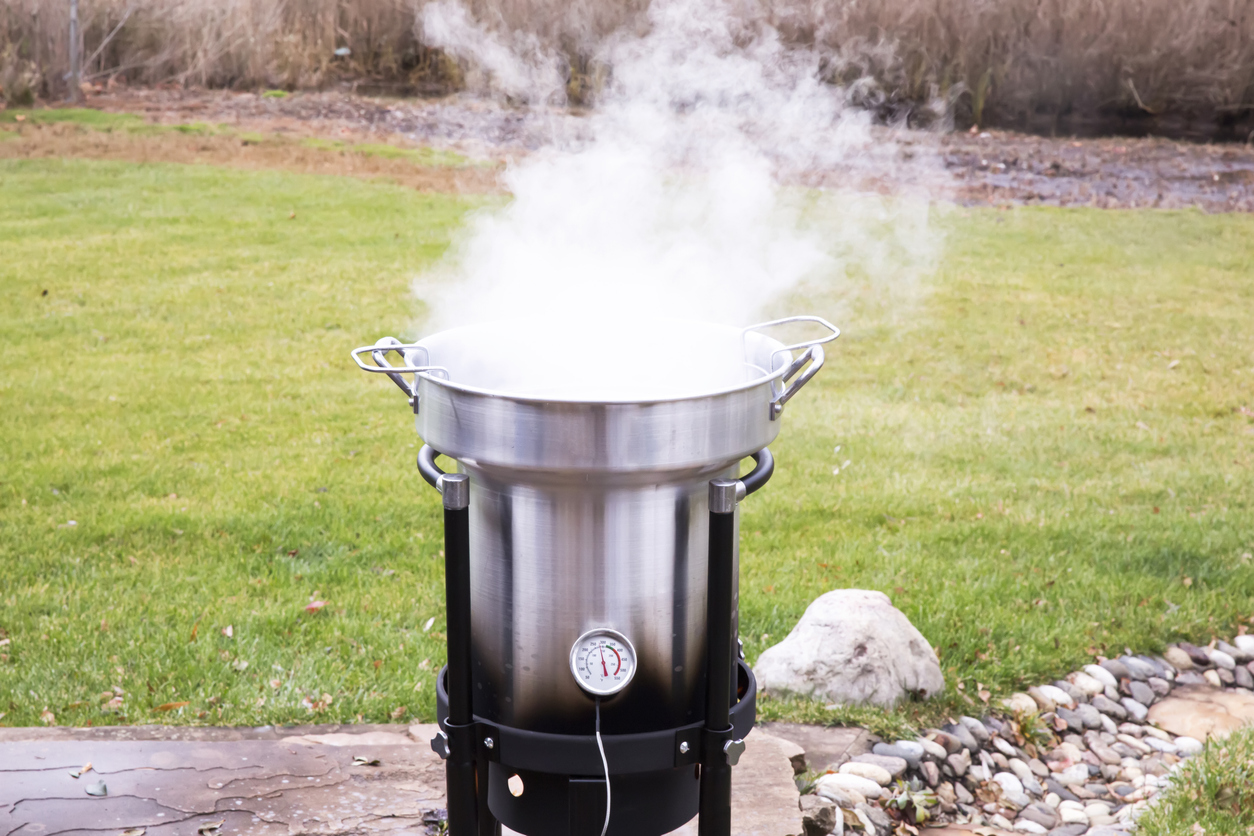
Frying a turkey isn’t like driving somewhere without directions, where the worst that can happen is that you get lost and turn on Google maps. In this case, you really need to read the manual. If you’ve thrown out the construction and cooking guides, there’s plenty of information online, and you should always refresh your knowledge before you start.
In addition, keep a fire extinguisher nearby. I don’t say this to scare you but to be practical. When you’re cooking with hot oil over a live flame, there’s always a potential for fire. You can’t put out an oil fire with water. And keep the propane tank as far away from the burner as its hose will allow. If the worst does happen and oil splatters on the flame, you don’t want the propane to explode.
Likewise, prepare the equipment away from the walls of your house. Again, this is just in case. Make sure the fryer is on an even surface, such as a patio or cement, not inside (unless it’s designed for inside use) or under a roof. Don’t fry a turkey on grass, where it could tilt, or an incline, however slight.
Wear safety gloves that go up to your elbows, along with a leather apron to prevent burning from the occasional splatter when lowering the turkey into the oil. Keep all your necessary equipment nearby: turkey hooks, temperature gauges for the oil to tell when turkey frying temperature is optimal (325 degrees Fahrenheit), and meat thermometers. Once the oil starts heating up, you should never leave the equipment unattended.
DO understand that there’s a difference between frying a turkey indoors v. outdoors.
It might sound crazy, but you can fry a turkey indoors given the right fryer and setup. Just be aware of safety concerns, like proper ventilation. Most important, confirm that the fryer is designed for indoor use. Other considerations are oil splattering onto a hot burner or bystander or a potential fire if the oil temperature is set too high. Never attempt to fry a turkey with a traditional outdoor fryer inside your home.
Some indoor turkey fryers rely on air frying techniques, using no oil. That’s a bonus in terms of both safety and nutrition. Most turkeys won’t fit in an indoor air fryer, but some can accommodate up to a 15-pound bird, or smaller options like chicken or quail. Indoor fryers with oil require careful attention to fryer operating instructions and safety. The oil inside gets extremely hot. Still, these indoor fryers can cook a turkey at similar or even faster times than outdoor models.
Both air frying and indoor oil frying can crisp up the skin (which usually means a gentle spray of cooking oil even for air drying), but air frying takes longer and requires frequent checking near the end to cook the bird all the way through without burning it. Cleanup is worse with oil, but easy with an air fryer. Both can add that greasy smell to a house, but it typically worse with actual oil. So inside vs. outside and oil vs. air boil down to preference, weather, messiness, and safety.
DO measure how much oil you need to deep fry a turkey.
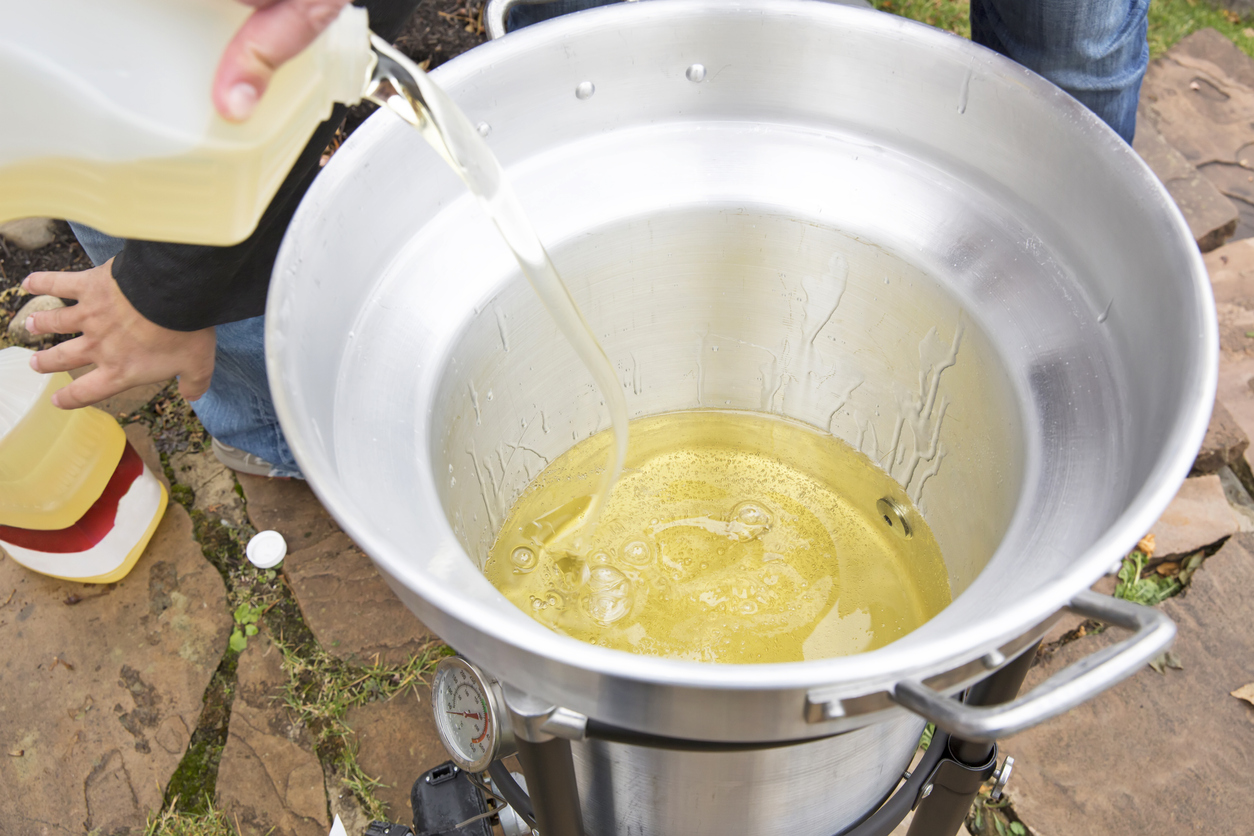
Knowing how to deep fry a turkey includes knowing how much oil to use to cover the bird but prevent overspill in the fryer. The biggest user error is randomly filling the stock pot with oil, dropping the turkey in, and watching the oil overflow onto the propane flame. There you go: Fire and possible explosion.
Here’s how to measure the volume before you begin: Put the turkey in the pot. Fill with water to cover. That’s how far the oil will rise. Remove the turkey. Draw a line with a food-safe marker to where the water settles back down. This is how much oil you need to fry a turkey. Indoor fryers should have a maximum fill line as a guide to prevent overflow.
Wash the pot and dry it well. Remember the rule: Oil and water are enemies.
RELATED: How to Dispose of Cooking Oil
DON’T use just any kind of oil—the best oil for deep frying a turkey is vegetable oil.
Most recipes tout peanut oil for frying turkeys, and it ranks among the high-heat and neutral-tasting oils. Both Bon Appetit and Epicurious list peanut or canola oil as among the top for frying. Low-heat oils cannot sustain high temperatures as well, and inject too much of their flavor into the dish. Peanut oil is plant-based and therefore technically a vegetable oil.
However, if cost is a concern, your favorite products labeled “vegetable oil” will do for turkey frying. They typically are a mix of several plant-based oils (often corn, soybean, and sunflower) in one product, and cost slightly less than canola (made from rapeseed) or peanut oil. That matters when you consider the volume needed to fry a turkey, about 4 to 5 gallons for a turkey weighing 14 pounds cooking in a 30-quart pot. All three work well for frying. Avoid highly aromatic and expensive low-heat oils like hazelnut or flaxseed; even olive oil is better at medium heat than high.
DON’T guess on the turkey cook time—do the math instead.
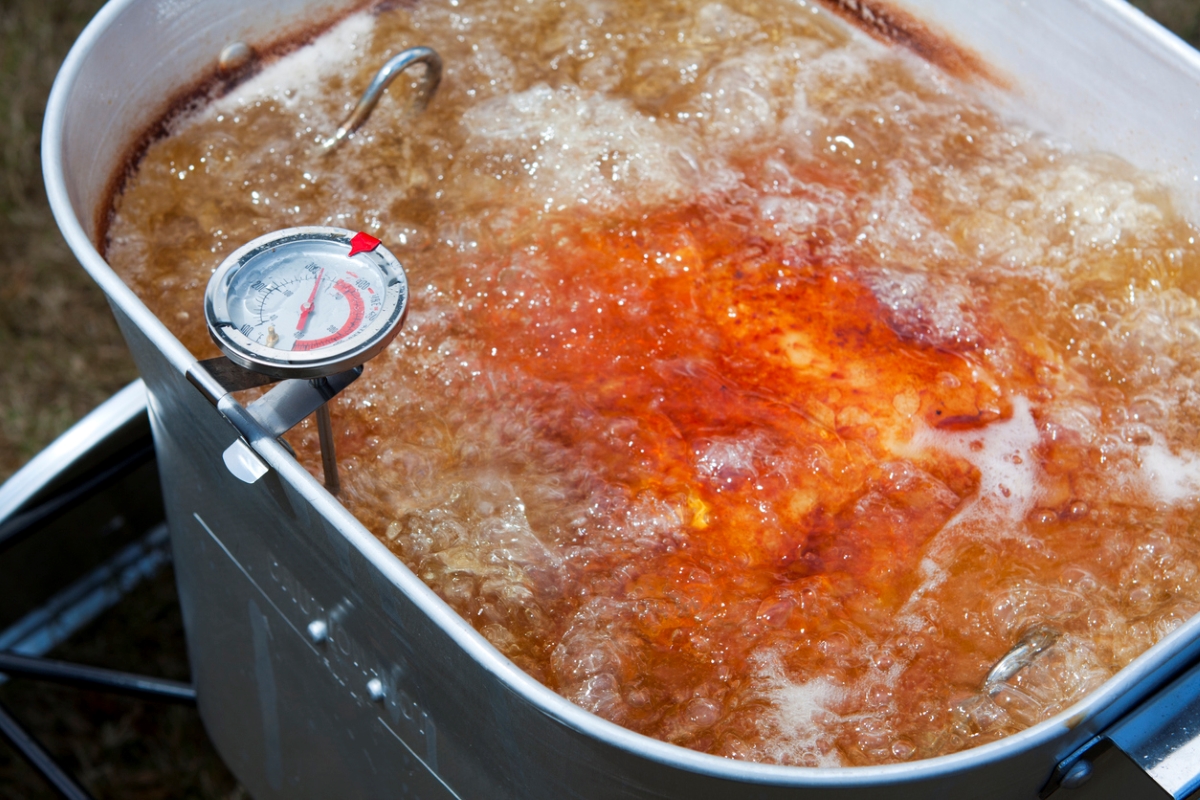
When you unwrap your turkey for prep, write down the poundage. If you forget to do the previous step and measure the volume, this can help you figure out how much oil you’ll need to cook it without overfilling the pot. There are plenty of guides online to help.
You also need to know how long to deep fry a turkey. This, too, will vary by poundage, but the general rule is 3 to 4 minutes per pound, plus a few minutes extra depending on how big the bird is. In general, it takes about 45 to 60 minutes for an average-size bird of 14 to 15 pounds. Indoor deep fry turkey time might be shorter than those listed for outdoor frying, so be sure to check appliance information and your deep fry turkey recipe.
Again, consult your guide if you haven’t thrown it out. It should also tell you, according to the model you have, whether you should fry the bird with legs up or legs down. While seasoned cooks might think, “Duh, legs up so that the juices settle into the breast,” that’s not how all of these machines work.
Finally, don’t depend on your eyes. The skin will turn a pretty golden color long before the interior is done. A good meat thermometer is essential, and the fried turkey internal temperature should reach 165 to 170 degrees Fahrenheit in white meat, and 175 to 180 degrees for dark meat.
RELATED: I Tried Char-Broil’s The Big Easy to “Fry” My Turkey: Did It Work?
DO dry (rub) the turkey.
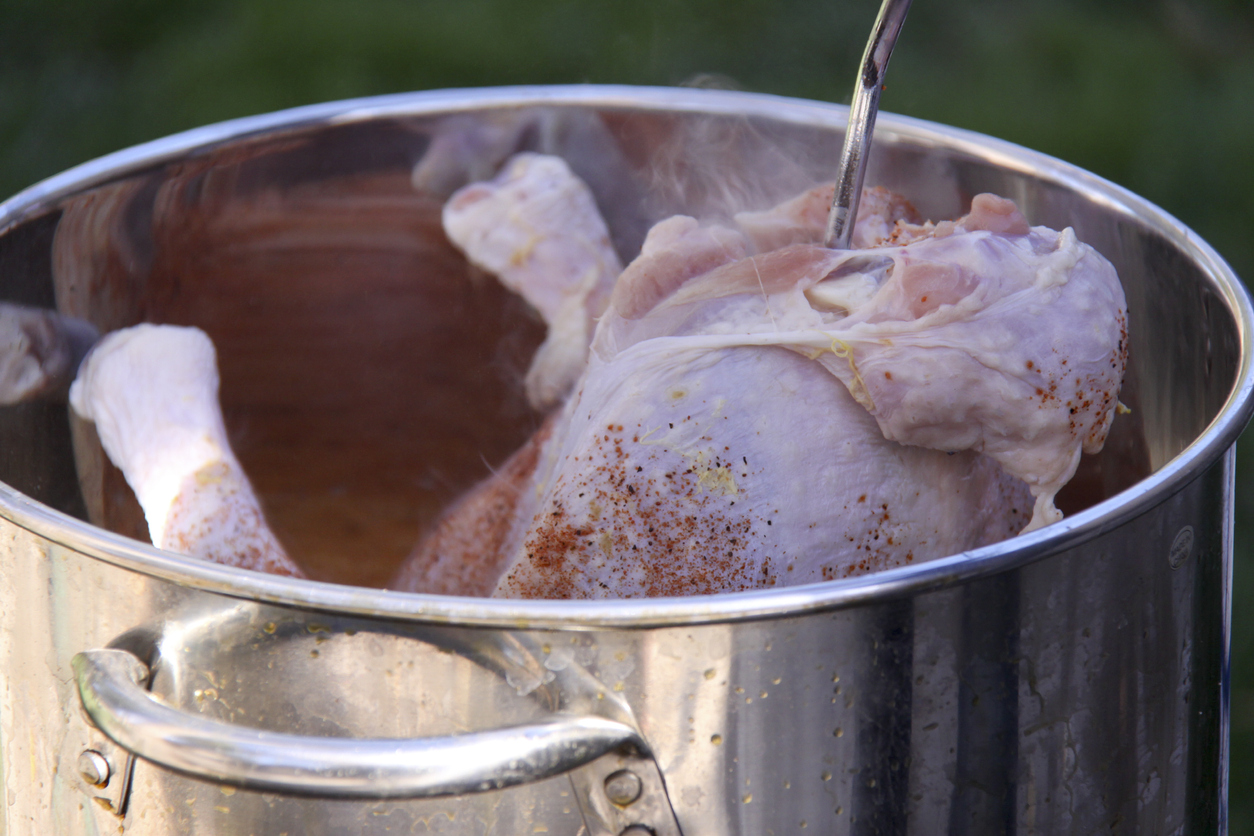
You’ll find plenty of deep fried turkey recipes on the internet. Some will provide rubs with herbs, spices, or both. You can drop a seasoned bird into the oil. That’s not a problem.
Others will advise you how to marinate your bird, inject it under the skin, or brine it. Many deep fried turkey kits come with accessories such as a syringe set so that you can flavor the poultry in unique and individual ways.
If you do choose to go the marinating route, be sure that you dry the turkey thoroughly before you fry it. Any liquid on its skin will cause the oil to splatter.
DON’T drop the bird into the oil wet, tied, or stuffed.
As with roasting or any other method, a turkey needs to be completely defrosted, and have giblets removed, before it can be deep fried. With frying, it also needs to be dry. I like to wrap it in paper towels, and stuff some inside the cavity while the turkey sits in the refrigerator for about an hour before I’m ready to cook it. The towels absorb the extra moisture. Then I let it warm up for about 15 to 20 minutes before it hits the hot oil.
Don’t forget, of course, to remove the paper towels before it goes for a dunk. Make sure you’ve untied the legs as well, if they’ve come tied, and don’t twine them together if they’ve come loose. Your turkey basket or rack should do enough to keep the bird together.
In the oven, you have a choice about whether to cook your stuffing inside the turkey or out of it, although experts recommend doing it separately to avoid foodborne illness or cross-contamination. When you deep fry a turkey, you have no such option. Don’t add anything to the cavity.
DO watch the process the entire time.
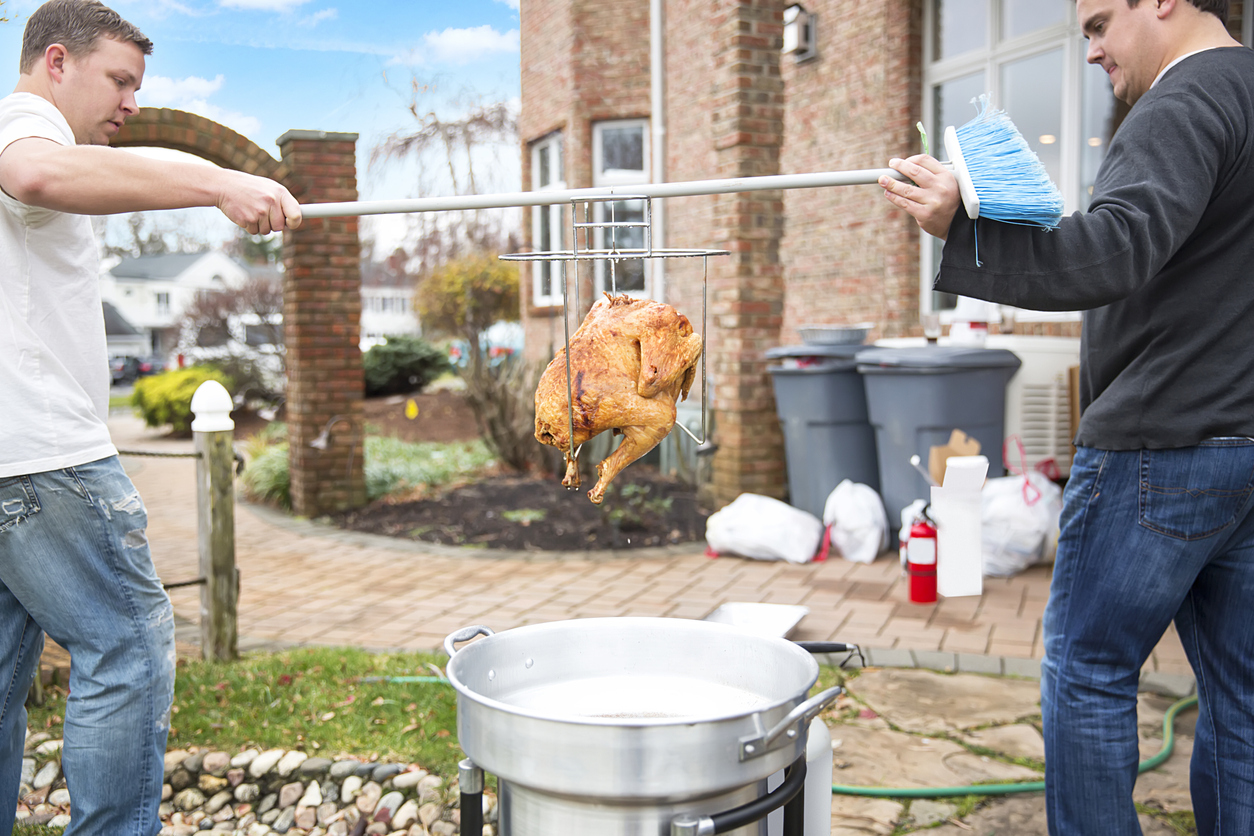
It’s tempting to pop the ignition and go grab a beverage while the oil heats up. The process of getting the oil to a cooking temperature of 325 degrees takes from 30 to 45 minutes. Sure, standing near a propane flame while the fryer heats up and the turkey cooks is hot and sweaty work (but standing far enough away to avoid splatters). It helps to have a designated runner who can bring you drinks and appetizers, along with any tools you may have forgotten. Leaving the scene of hot oil and live fire to gather with relatives or friends simply isn’t an option.
In addition to the physical dangers of deep frying a turkey, consider the culinary ones. Despite the best calculations out there, you need to keep close watch to avoid burning the oil or the bird (even when frying indoors). The easiest way to check oil and turkey temperatures is with an air fryer with built-in thermometers. Keep watch of the heating oil with a fry thermometer that attaches to the edge of the pot so its tip is submerged in the oil but does not touch the side of the pot. Remove it when placing the turkey inside, then replace it to monitor oil temperature as it cooks.
Enlist a helper if necessary to check the cooking temperature of the turkey at the estimated time. Turkey fryer baskets should have a hook or handle to lift the turkey out of the oil and suspend it while checking with an instant meat thermometer.
Additional reporting by Teresa Odle.

